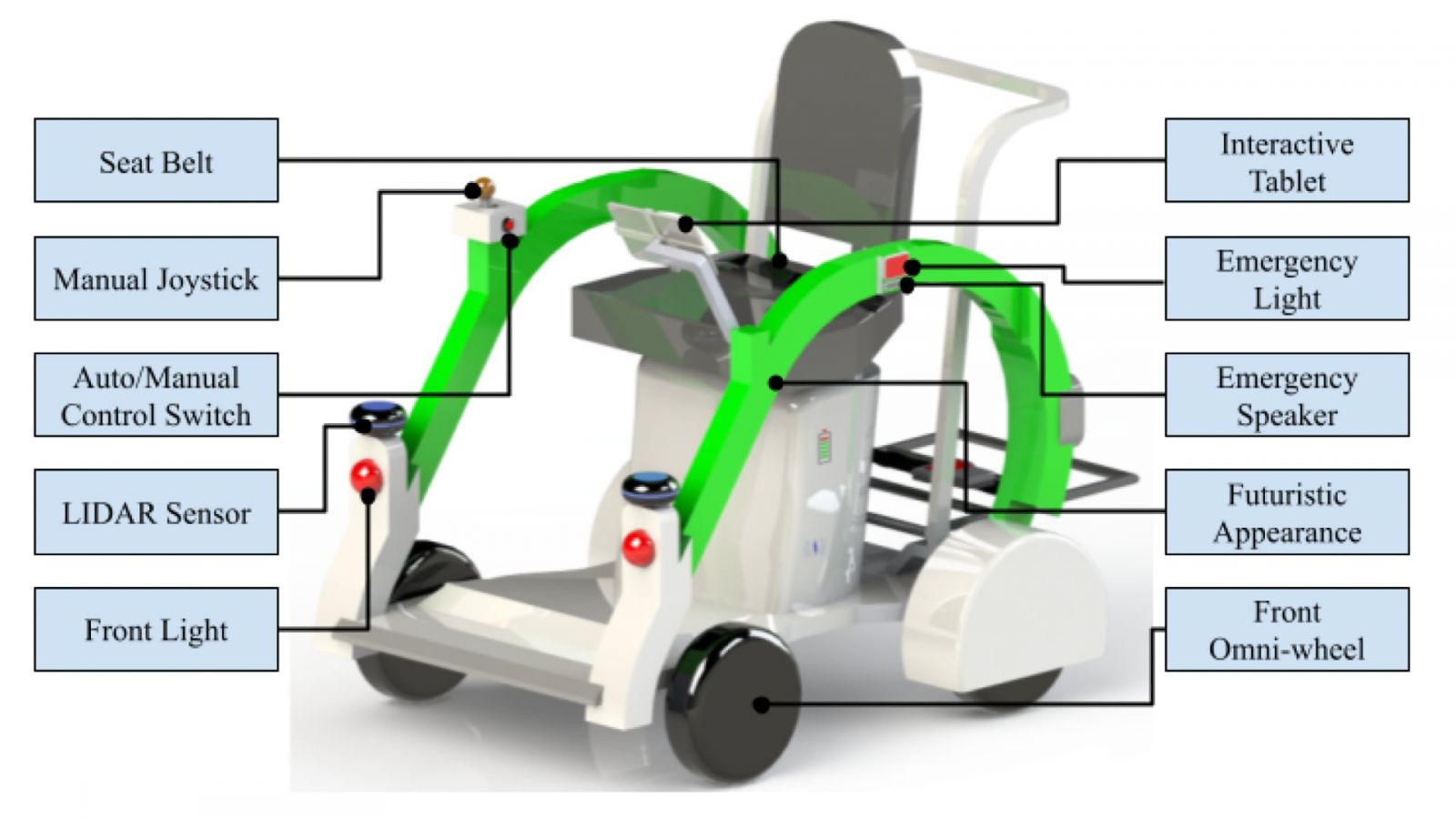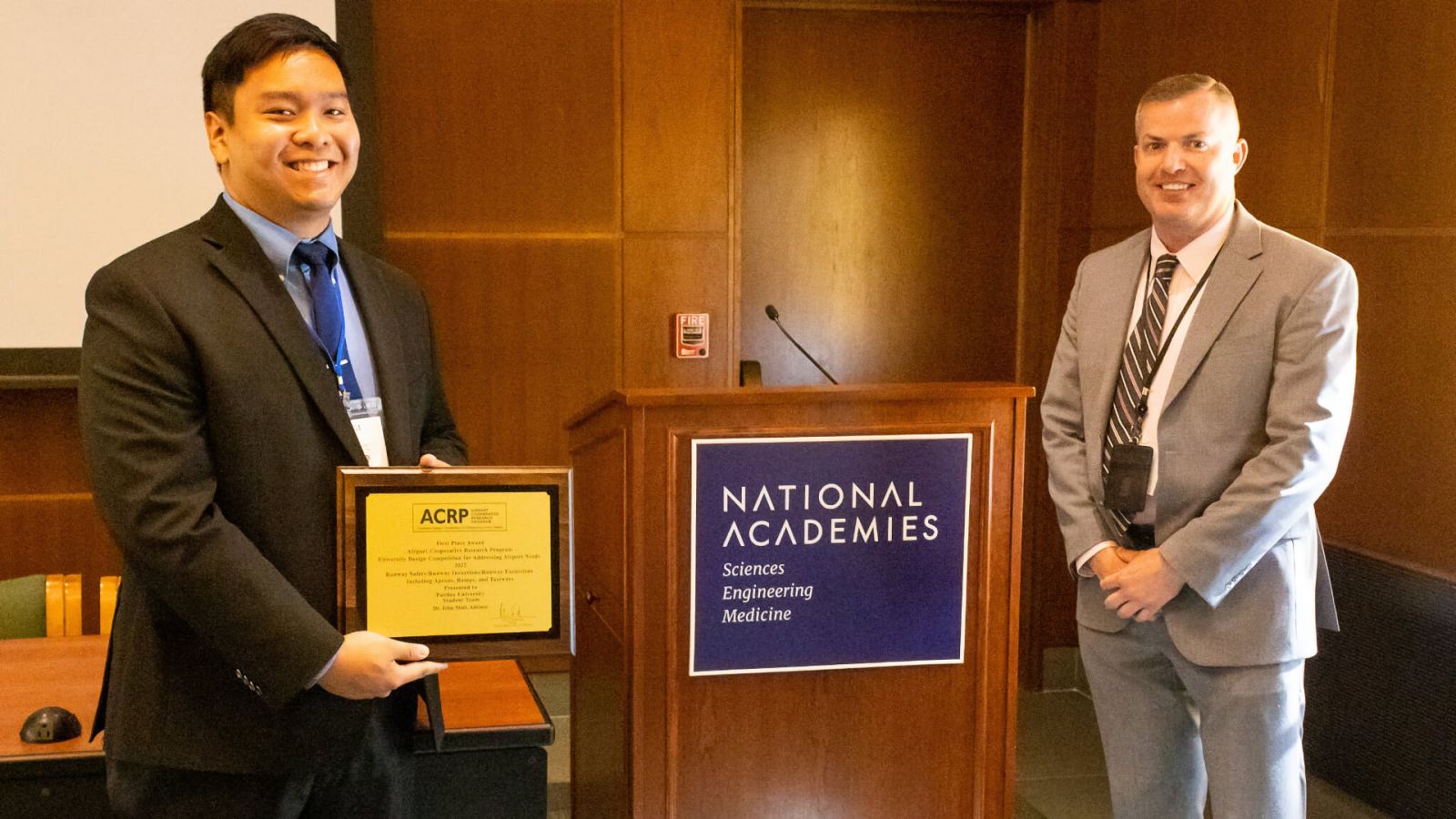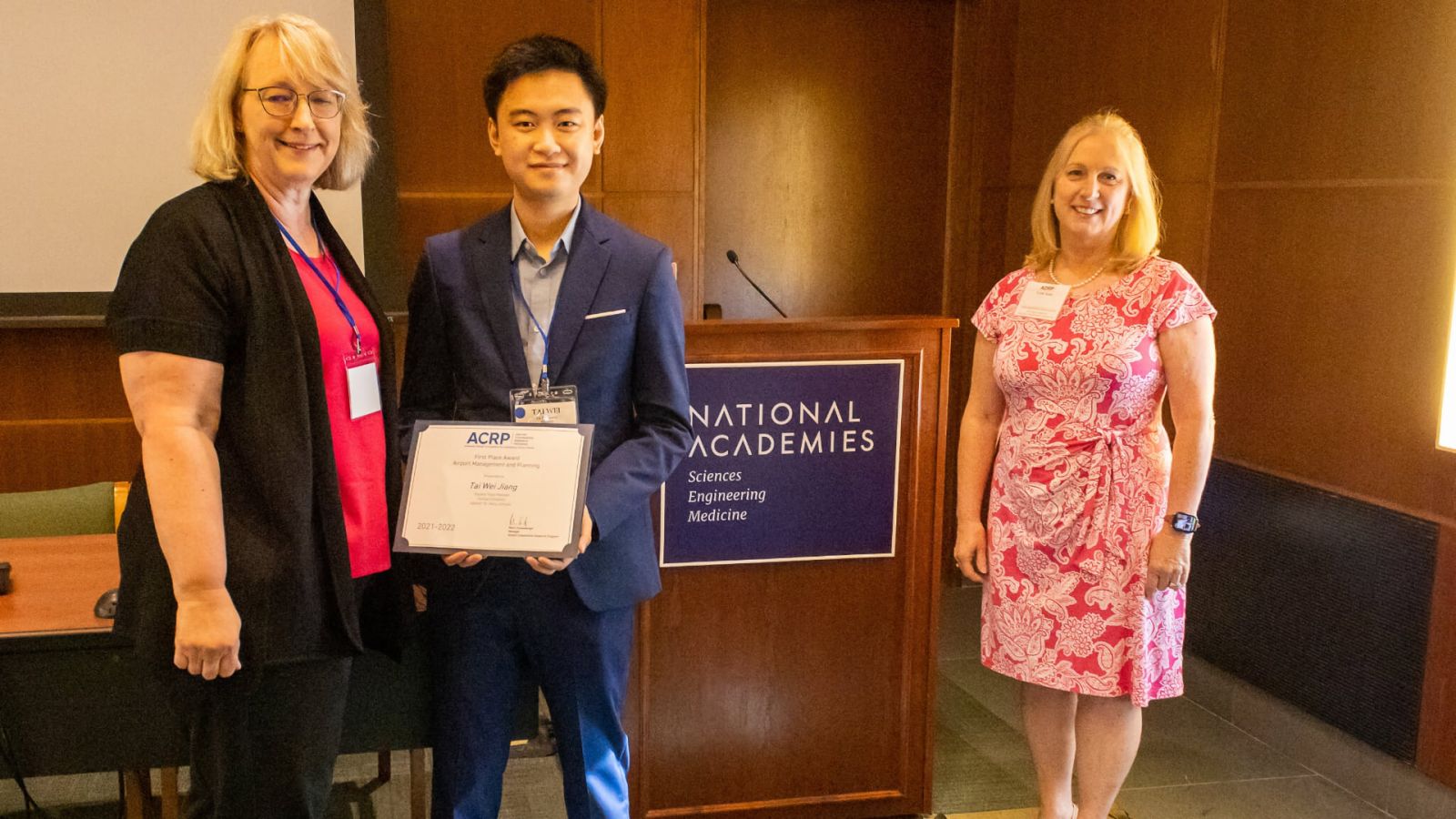
Student teams from the School of Aviation and Transportation Technology at Purdue University’s Polytechnic Institute won first-place and third-place awards at the Transportation Research Board’s annual University Design Competition for Addressing Airport Needs.
For the 16th annual competition, the Transportation Research Board’s Airport Cooperative Research Program (ACRP) invited teams of college students to find practical solutions for issues at airports. Team members contact airport operators and industry experts to obtain their advice and assess the practicality of the proposed design solutions.
First-Place Awards

“Simple, Affordable, Flexible, and Expandable Runway Status Lights”
Challenge Category: Runway Safety / Runway Incursions / Runway Excursions Including Aprons, Ramps, and Taxiways
Faculty Advisor: John Mott
Luigi Raphael I. Dy, graduate research assistant, and McClane E. Rush (BS aviation management and aerospace financial analysis ’20, MS aviation and aerospace management ’22) won first place for their proposed SAFE-RWSL (Simple, Affordable, Flexible, and Expandable Runway Status Lights) system. Their design uses aircraft position information from Automatic Dependent Surveillance-Broadcast (ADS-B) transmissions to wirelessly activate lights that indicate runway status to aircraft taking off and landing, and to aircraft, vehicles, and pedestrians using or crossing a runway. This system will supplement see-and-avoid and radio communications at non-towered airports and reduce the probability and corresponding risk of an aircraft collision from a runway incursion.

 “Airport Unmanned Self-Driving Wheelchair”
“Airport Unmanned Self-Driving Wheelchair”
Challenge Category: Airport Management and Planning
Faculty Advisor: Mary Johnson
Seongjun Ha, graduate teaching assistant, Tai Wei Jiang and Gita Andhika Swastanto, graduate students in aviation and aerospace management, won first place for their Airport Unmanned Self-Driving Wheelchair (AUSW) design. Existing support facilities at airports for people with physical and psychological impairments are inefficient and inconvenient, the team said. The AUSW is designed to make airports more inclusive by alleviating major mobility and wayfinding issues. More broadly, the implementation of AUSW will improve airport safety, optimize airport operation costs, and maximize airport accessibility.
Third-Place Award

“A Systematic Decision-Making Approach for Developing and Maintaining a Plan for Airport Pavement”
Challenge Category: Airport Operation and Maintenance
Faculty Advisor: Mary Johnson
Abigail Sheets, graduate teaching assistant, Junghye Lee, graduate student in aviation and aerospace management, FNU Govind (graduate teaching assistant), and Edward Tirpack (assistant chief flight instructor and lecturer) won third place for their proposal for a simplified and systematic decision-making process to assist airport personnel with formulating and maintaining a design for pavement management, monitoring and maintenance. Airports face an overwhelming amount of regulations, standards, and recommended practices governing airport pavement management, monitoring, and maintenance, they said. Because airport pavement can vary in design and materials, individual airports require customized pavement management plans (PMP) — but many airports have yet to establish such plans do to high initial costs and time required. The team’s simplified PMP design includes four phases: airport pavement project definition, incorporation into airport project plan and budgeting, incorporation into airport maintenance plan, and then reevaluate and improve the plan. The process includes continuous evaluations via single and double feedback loops to increase the maintainability, sustainability and longevity of a PMP.
Additional information
- Winners selected for the 2021-2022 TRB Airport Cooperative Research Program University Design Competition for Addressing Airport Needs (Transportation Research Board)
- Polytechnic students win multiple categories at annual airport-related design challenge (2020)
- Aviation students design intelligent monitoring system for airport aprons (2018)
- Two student teams score wins in Airport Cooperative Research Program design competition (2017)
- Aviation students win three awards in airport design competition (2016)
